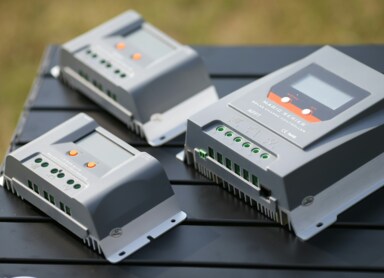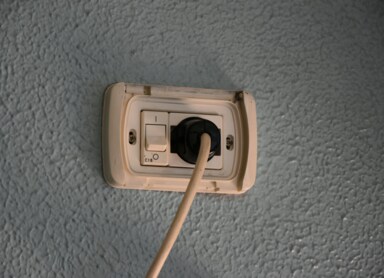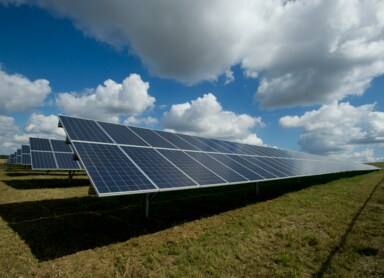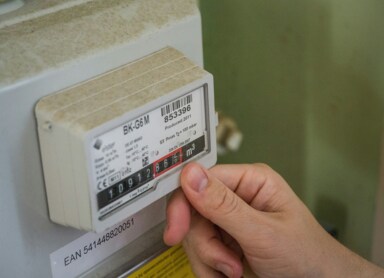Alternative energy sources - what is worth knowing about them?
The use of electricity is crucial for companies and individual users. As natural resources become depleted, there is more and more talk of alternative energy sources. What are these and how can they be used?
Alternative energy sources - introduction and definition
It is difficult to imagine life today - let alone running a business - without access to electricity. We use it in production processes, it powers transport, services and the homes of individual consumers. For hundreds of years, non-renewable energy sources such as wood, lignite and natural gas were the basis of the world's economies.
With growing awareness of the need to protect the environment, but also of gradually depleting natural resources, there is more and more talk of alternative energy sources. How do we understand this concept?
Alternative energy sources (sometimes also referred to as renewable energy sources, RES for short) stand in opposition to conventional raw materials. They can be sourced independently of large institutional suppliers, such as DSOs, and without harming the environment. Renewable energy sources have been gaining popularity over the years, not only among entrepreneurs looking for a way to cut business costs, but also among consumers looking for ways to reduce their ever-increasing electricity bills.
Sustainability policy is also of considerable importance in creating public awareness of the issue. It exists not only as an academic concept, but is gradually being implemented in the legal orders of individual countries. It is worth mentioning, for example, the EU's CSRD Directive1 or the Polish Renewable Energy Sources Act2 , which implement the assumptions of the green energy revolution. In this way, global economies are gradually - but consistently - changing their direction of development to one that takes into account the use of alternative energy sources.
It is worth mentioning that the axis around which the philosophy of sustainable development - and alternative energy sources - revolves is the conviction that the Earth's resources should be exploited in such a way that they will be sufficient also for future generations.
Alternative energy sources for the home - opportunities and limitations
Alternative energy sources may seem like a solution aimed solely at businesses, but RES can be - and increasingly are - also being used by private consumers. Generating electricity through photovoltaic panels or heating the home with a heat pump are just some of the popular examples.
Such investments, although costly, open up completely new possibilities in terms of lowering bills, energy security and stability, but also living comfort. Many of the modern technologies are controlled using EMS/HEMS (Energy Management System/Home Energy Management System) systems. These are computerised control panels that collect and process signals from, for example, photovoltaics and connected energy storage. They then automatically make decisions about the management of the individual devices that make up the home network.
Do alternative energy sources impose any constraints on consumers? Yes, and it is worth becoming aware of them before investing tens of thousands of zloty in modern technology.
First of all, each type of RES requires a specialised infrastructure. Its installation entails expenses, and often (as in the case of ground-source heat pumps or ground-mounted PV panels) also the need to carry out ground works.
In addition, it must be remembered that such investments entail a considerable expense. Of course, it is possible to apply for high refunds, e.g. from the My Current programme or as part of the thermal modernisation allowance. Nevertheless, you have to reckon with an expense of at least a dozen, and more often several dozen thousand zlotys.
Alternative sources of electricity - types and applications
Alternative energy sources can be divided according to various criteria. One of these is the source of origin. In this context, a distinction is made between energy:
- solar;
- hydro and tidal;
- wind;
- geothermal;
- from biomass;
- from biogas.
Renewable energy sources do not include nuclear power, as uranium is required to produce it. However, this does not apply to Fast Breeder Reactors (FBRs), which use nuclear waste recycling.
While it is possible to generate electricity using any of the listed energy sources, which will go to the DSO grid or directly to consumers, it will not always be possible to use any of these solutions. A good example is photovoltaic farms, which require large, flat and unshaded areas, such as uncultivated farmland, for maximum efficiency. In contrast, the use of water and tidal energy requires the proximity of a body of water.
What are the benefits of using alternative energy sources?
The use of alternative energy sources creates entirely new opportunities for corporate consumers. First of all, it allows large amounts of energy to be extracted at a much lower cost than traditional energy sources and without harming the environment. As a result, the growth of the company can proceed faster, as there are fewer costs to maintain it.
Energy independence is also an advantage, invaluable for companies relying on machinery parks, production lines or round-the-clock operations. For them, even the shortest interruption of power from the electricity grid means high financial losses. With alternative energy sources, you can significantly increase your economic security.
Finally, investment in RES can mean an additional source of income. A company that invests responsibly and includes in its innovations, solutions that increase the energy efficiency of the building can apply for the so-called white certificates issued by the Energy Regulatory Office. These certify the achievement of the so-called energy effect. They constitute securities and can be traded on the financial markets.
Economic and environmental analysis
When assessing the effectiveness of alternative energy sources, it is difficult not to take a closer look at the cost side of such an investment. On the one hand, specialised infrastructure is expensive and this is hard to deny. On the other hand, however, RES technologies are, by design, virtually failure-free, so maintenance expenses are minimal. Besides, the investment itself pays for itself quickly - in the case of photovoltaics it is about 6-8 years, depending on the parameters of the installation. After this time, the technology starts to earn for itself quickly.
At the same time, RES have virtually no negative interaction with the environment. They also do not cause damage to local fauna and flora and do not require the maintenance of huge open-pit mines, as in the case of coal.
Innovative alternative energy technologies - new to the market
RES technologies are constantly developing and their energy efficiency is constantly improving. In other words, we can have more and more electricity for less and less money. New trends include thin-film, hybrid or perovskite cells - using lead and tin instead of silicon - in photovoltaics. Also new are hydrogen boilers, which do not produce harmful oxides and dust, or modern hydropower turbines.
Companies looking for a competitive advantage in the market should pay attention to the evolving face of alternative energy sources. This is an entirely new way to increase business profitability, reduce its costs and improve its public image. It is advisable to enlist the help of specialists in planning such activities.
1. https://eur-lex.europa.eu/legal-content/PL/TXT/?uri=CELEX%3A32022L2464
2. https://isap.sejm.gov.pl/isap.nsf/DocDetails.xsp?id=wdu20150000478






